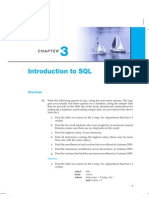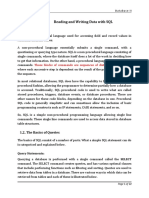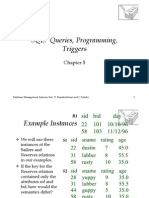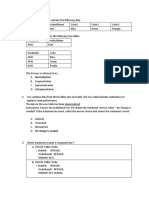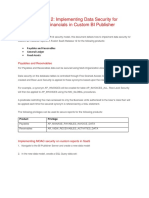0% found this document useful (0 votes)
109 views55 pagesSQL - Part I
Structured Query Language (SQL) is a standard language used to query, manipulate, and define relational database data. SQL allows users to perform data retrieval, insertion, deletion, and updates. The document provides examples of basic SQL queries using SELECT statements to retrieve data from tables, JOIN statements to combine data from multiple tables, and subqueries to nest one query within another query. It also covers pattern matching with LIKE, ranges with BETWEEN, logical operators, and other SQL constructs.
Uploaded by
SolankiManishCopyright
© © All Rights Reserved
We take content rights seriously. If you suspect this is your content, claim it here.
Available Formats
Download as PDF, TXT or read online on Scribd
0% found this document useful (0 votes)
109 views55 pagesSQL - Part I
Structured Query Language (SQL) is a standard language used to query, manipulate, and define relational database data. SQL allows users to perform data retrieval, insertion, deletion, and updates. The document provides examples of basic SQL queries using SELECT statements to retrieve data from tables, JOIN statements to combine data from multiple tables, and subqueries to nest one query within another query. It also covers pattern matching with LIKE, ranges with BETWEEN, logical operators, and other SQL constructs.
Uploaded by
SolankiManishCopyright
© © All Rights Reserved
We take content rights seriously. If you suspect this is your content, claim it here.
Available Formats
Download as PDF, TXT or read online on Scribd
/ 55





















